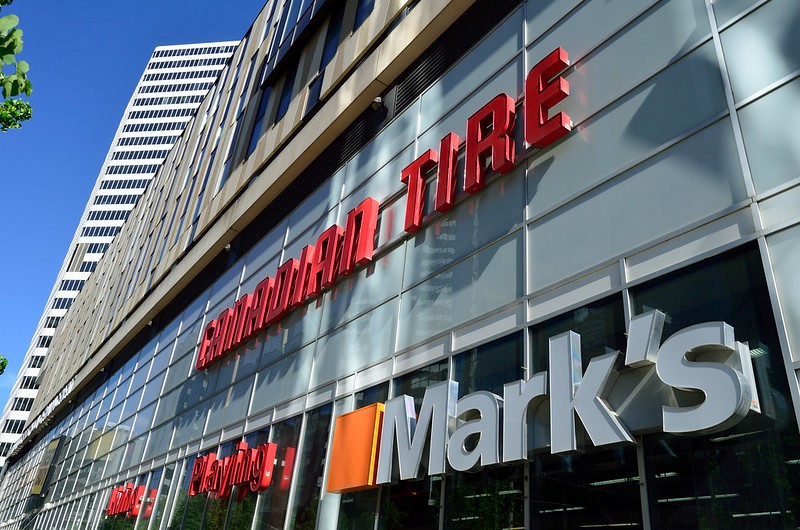
The economic impact of COVID-19 has rippled through industries across the world. Businesses everywhere have dealt with sudden closures, new health and safety rules and disruptions to the supply chain.
For alumnus Dan Chan (IndE 9T0), vice president of supply chain strategy at Canadian Tire Corporation (CTC), the pandemic has presented the greatest challenge of his career, testing his expertise in industrial engineering as he worked to rapidly solve problems and ensure the company continues to offer the highest level of customer service.
As COVID-19 cases in Canada rapidly spiked in March, schools closed, and home essentials such as bathroom tissue began flying off the shelves. Meanwhile, Canadian Tire’s supply-chain team had begun planning for the pandemic as early as December.
Since graduating from U of T Engineering, Chan has worked in supply chain management for 27 years. Over his 24 years at CTC, he says he’s had the pleasure of working alongside many industrial engineers whose expertise has been integral to the operational success of the supply chain.
“Industrial engineers maximize service levels while balancing inventory, warehouse and transportation needs within the supply chain,” explains Chan. “They play a prominent, crucial role.”
 Network modelling, for example, is used to help deploy inventory, while human factors design is integral to improving ergonomics and optimizing distribution centre layouts. And with Canadian Tire having one of the largest fleets of automatic guided vehicles in North America, automation is regularly used within the distribution centres. What’s more, with huge amounts of raw data to analyze and interpret, industrial engineers regularly make recommendations to increase efficiencies and manage bottlenecks in order to provide customers with what they need.
Network modelling, for example, is used to help deploy inventory, while human factors design is integral to improving ergonomics and optimizing distribution centre layouts. And with Canadian Tire having one of the largest fleets of automatic guided vehicles in North America, automation is regularly used within the distribution centres. What’s more, with huge amounts of raw data to analyze and interpret, industrial engineers regularly make recommendations to increase efficiencies and manage bottlenecks in order to provide customers with what they need.
Along with the question of how the virus in China would affect the supply chain, there was the question of how Canadian Tire stores would be impacted as COVID-19 began to appear in North America. As cases rose in Ontario, non-essential businesses were asked to close to help contain the virus and lighten the burden on the Canadian health-care system.
On March 19, SportChek and Mark’s — stores under the CTC umbrella — were closed to the public as a step to help curb the spread of the virus. On April 4, Canadian Tire stores in Ontario, which make up 40 percent of the store network, temporarily shut their doors. But online sales were still available.
“We saw a huge surge — shopping levels higher than during our Black Friday sales,” says Chan.
The unprecedented jump in e-commerce wasn’t the only new challenge to deal with — certain items were in huge demand. With gyms closed, customers were looking to order exercise equipment and weights online to begin building their at-home workout routines. These items were five times more popular than before the pandemic and at first, it was difficult to meet the unpredictable levels of demand.
Industrial engineering tactics allowed CTC to optimize the processes in their distribution nodes to fulfill customer orders. By taking in and analyzing huge amounts of data resulting from online orders, Canadian Tire could identify potential bottlenecks in the process as well as identify the capacity of various distribution nodes to help determine where to send the work to get orders out on time and as quickly as possible.
As distribution nodes adapted to manage the huge amount of online sales, stores were slowly able to open again in Ontario.
On May 9, Canadian Tire stores in Ontario reopened to the public and by mid-May, SportChek and Mark’s across Canada would follow. This brought a new slew of challenges to ensure both employees and customers could be safe while shopping. Practicing physical distancing and personal protective equipment (PPE) would all be part of the new normal in warehouses, distribution centres and retail stores. Canadian Tire needed to source and distribute PPE to all of their employees and be sure all their operations met the rigorous safety protocols set out by health and safety experts — all changes that were informed through data analysis by CTC’s industrial engineering team.
CTC has implemented health and safety protocols in its 1,700 retail locations and distribution centres, as the company continues to adapt and explore new ways to meet the increased customer demand for storefront and e-commerce options.
“One of the key principles we embrace in supply chain management is resiliency,” says Chan. We have a plan, and a back-up plan and know how to make quick decisions, adjust and move forward.”
-Published August 25, 2020 by Lynsey Mellon, lynsey@mie.utoronto.ca